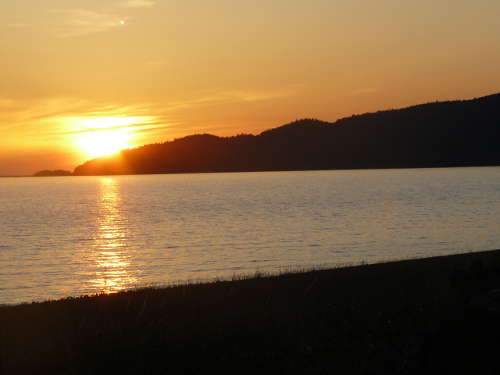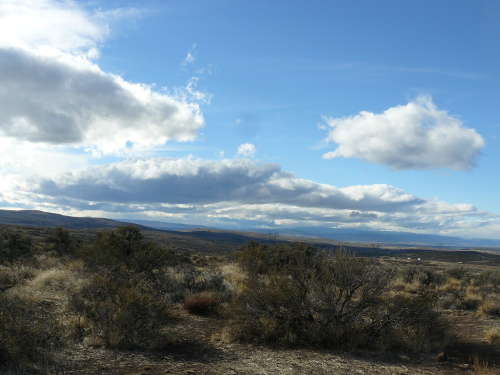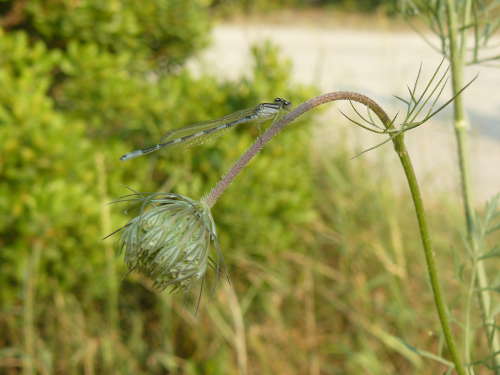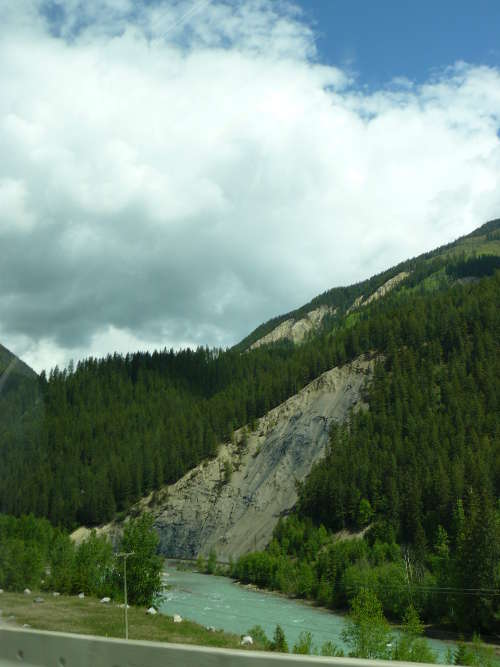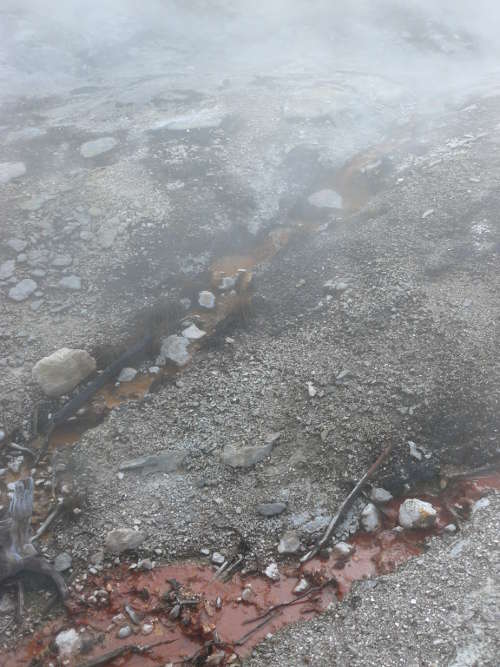 Location Taken: Yellowstone National Park, Wyoming
Location Taken: Yellowstone National Park, Wyoming
Time Taken: October 2012
There’s a geothermal feature at Yellowstone called Artist’s Paintpots, and well, this is why.
That’s a spectacularly vibrant yellow-orange in that one flow, and a marvelous red in the other, don’t you think?
I’m pretty sure I actually do have those colors in my paint collection.
*checks*
Yup, that yellow-orange is pretty close to my “Yellow Mid” color, and that red is almost identical to my “Cinnabar”.
Though in my paints, the “Cinnabar” color doesn’t contain any actual cinnabar. Cinnabar contains high levels of mercury, you see, which, while it produced a gorgeous color, was also, well, toxic. Not that people understood that, or perhaps just didn’t care, when they started using it in paints. I mean, lead white was popular for a long time, and lead’s toxicity has been known for ages. These days, other compounds have been found that produce a similar color without all those nasty side effects.
I wouldn’t be surprised if this is actually a stream of cinnabar, really. Cinnabar is Mercury Sulfide, and sulfur is quite common in geothermal vents. So all it would take is a little mercury contamination, and you get a brilliant red stream. Though cinnabar isn’t soluble in water, but then, the stream itself looks really muddy. I mean, sand isn’t soluble either, but it gets carried by streams all the time.
I wonder if any artist has actually tried using these “Paintpots” as actual paintpots in the past. Knowing how strange humans can act, I wouldn’t be too surprised…

